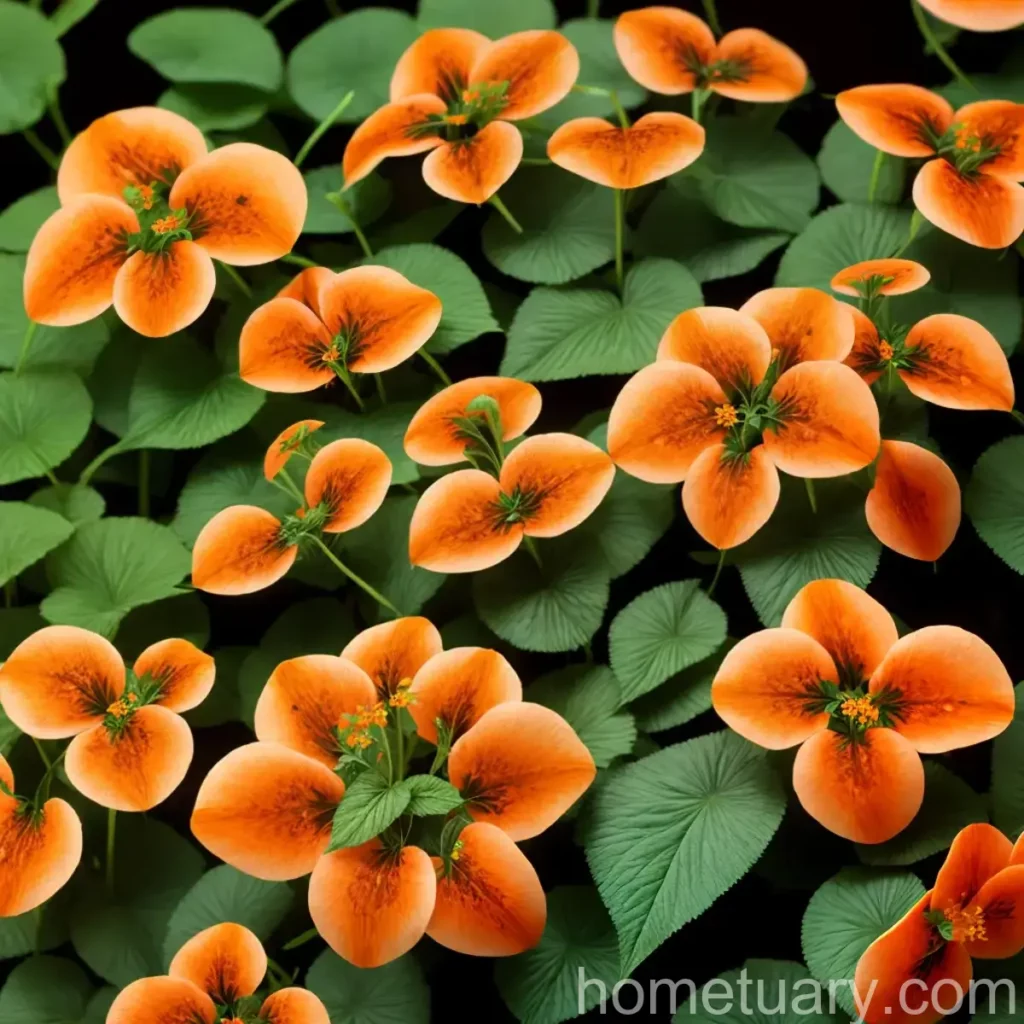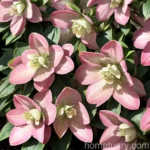Plant Scientist Blog: All About Jewelweed (Impatiens capensis)
Introduction
As a plant scientist, I am excited to delve into the intricate details of Impatiens capensis, commonly known as jewelweed. This fascinating plant has a rich history, a myriad of uses, and intriguing characteristics that make it a valuable subject of study for botanists, gardeners, and nature enthusiasts alike. Throughout this extensive blog post, we will explore the identification, cultural needs, uses, common diseases, and pests of jewelweed. Additionally, we will uncover its folklore, natural remedies, and wildlife interactions, providing a comprehensive understanding of this captivating species.
What is Jewelweed (Impatiens capensis)?
Impatiens capensis, or jewelweed, is a native North American annual plant that belongs to the family Balsaminaceae. It is commonly found in moist, shady locations such as woodland areas, along stream banks, and in wet meadows. The plant is recognizable by its delicate, trumpet-shaped flowers and unique seed dispersal mechanism, making it a distinctive and important component of many ecosystems.
Key Takeaways – Jewelweed (Impatiens capensis)
Before we delve deeper into the world of Impatiens capensis, let’s take a moment to highlight the key takeaways of this intriguing plant:
– Jewelweed identification
– Impatiens capensis uses
– Jewelweed medicinal properties
– Impatiens capensis benefits
– Jewelweed plant care
– Impatiens capensis characteristics
– Jewelweed natural remedies
– Impatiens capensis folklore
Now, let’s explore each of these aspects in detail to gain a comprehensive understanding of jewelweed.
Jewelweed Identification
Understanding the key characteristics of Impatiens capensis is crucial for its proper identification and cultivation. Here are some defining features of this plant:
Plant Description
- Height: Jewelweed typically grows to a height of 3 to 5 feet, making it a relatively tall annual plant.
- Leaves: The leaves are alternate, oval-shaped, and have a distinct light green color. They often appear to be water-repellent due to tiny hydrophobic droplets on the surface, reminiscent of a jewel, hence the name “jewelweed.”
- Flowers: The flowers are spurred and pendulous, exhibiting an exquisite orange or yellow hue, with red or brown spots that add to their allure.
- Habitat: Jewelweed thrives in moist, shaded environments and is commonly found near water bodies such as streams, rivers, and wetlands.
Flowering Season
- Jewelweed typically blooms from mid-summer to early fall, adorning its habitat with vibrant splashes of color.
Seed Dispersal
- An interesting feature of jewelweed is its explosive seed dispersal mechanism. When the seed pods mature and are touched, they forcefully burst open, scattering the seeds several feet away from the parent plant.
Learn more: Jewelweed Plant Description
Impatiens Capensis Uses
The uses of Impatiens capensis extend beyond its ornamental charm. This versatile plant holds numerous practical, medicinal, and cultural applications, including its utilization in natural remedies and traditional practices.
Medicinal Properties
Skin Soothing Properties
- Jewelweed is renowned for its skin-soothing properties and has been traditionally used as a natural remedy for poison ivy rashes, insect bites, and other skin irritations.
- The sap of jewelweed leaves and stems is believed to provide relief from itching and inflammation caused by these skin conditions.
Folk Remedies
- In some traditional folk medicine practices, jewelweed preparations are applied topically to alleviate skin discomfort and promote healing.
Natural Dye
- The vibrant orange or yellow flowers of jewelweed contain a natural dye that has historically been used to impart color to fabrics and crafts.
Ethnobotanical Uses
- In various indigenous cultures, jewelweed has been utilized in ethnobotanical practices, serving as a source of traditional medicine and natural remedies for skin ailments.
Wildlife Habitat
- Additionally, jewelweed acts as a vital food source for hummingbirds and other pollinators, making it an ecologically significant plant in many natural habitats.
Learn more: Impatiens Capensis Uses
Jewelweed Plant Care
To cultivate Impatiens capensis successfully, it is essential to provide the optimal care and growing conditions. From sunlight exposure to soil and water requirements, each aspect plays a crucial role in the health and vigor of jewelweed.
Water
- Jewelweed thrives in moist, well-draining soil and is commonly found near water bodies. Ample moisture is essential for the healthy growth of this plant, making it well-suited for gardens with shaded, damp areas.
Sunlight
- While jewelweed prefers partial to full shade, it can tolerate some dappled sunlight. In garden settings, it is often cultivated in shaded areas with indirect light.
Soil
- Rich, loamy soil with good moisture retention is ideal for growing Impatiens capensis. The addition of organic matter can enhance the soil’s fertility and water-holding capacity, promoting robust growth and flowering.
Fertilizer
- Fertilization requirements for jewelweed are minimal, especially when grown in nutrient-rich soil. However, a light application of balanced, water-soluble fertilizer can be beneficial during the growing season to support healthy foliage and blooms.
Learn more: Jewelweed Plant Care
Impatiens Capensis Characteristics
Understanding the key characteristics of Impatiens capensis is crucial for its proper identification and effective cultivation. Let’s explore some notable attributes of this captivating plant:
Growth Habits
- Jewelweed exhibits vigorous growth and has a tendency to spread in suitable environments, making it an excellent choice for naturalizing and filling in moist, shaded areas of the landscape.
Flowers
- The distinct flowers of Impatiens capensis bloom in various shades of orange and yellow, adorned with intricate patterns and markings, adding a striking visual allure to the plant.
Leaf Arrangement
- The leaves of jewelweed are arranged alternately along the stems, contributing to the plant’s overall aesthetic appeal and textural interest.
Learn more: Impatiens Capensis Characteristics
Jewelweed Natural Remedies
The therapeutic properties of jewelweed have long been recognized, leading to its utilization in various natural remedies for skin ailments and other health concerns. Let’s explore some of the ways in which Impatiens capensis is used in natural healing practices:
Traditional Medicinal Uses
- In traditional herbal medicine, jewelweed preparations have been applied topically to alleviate itching, inflammation, and discomfort associated with poison ivy, insect bites, and minor skin irritations.
- The cooling and soothing properties of the plant’s sap make it a valuable addition to natural first aid kits and skin care formulations.
Ethnopharmacology
- With its rich history of ethnobotanical uses, Impatiens capensis holds significance in the field of ethnopharmacology, offering insights into cultural healing traditions and botanical knowledge.
Skin Soothing Compress
- Infusions or poultices made from jewelweed leaves and stems are often used as skin-soothing compresses, providing relief from various skin issues.
Learn more: Jewelweed Natural Remedies
Impatiens Capensis Folklore
The history and folklore surrounding Impatiens capensis are as captivating as the plant itself, offering glimpses into its cultural significance and traditional beliefs. Let’s delve into the folklore and mythology associated with jewelweed:
Folk Traditions
- In certain folklore and folk medicine traditions, jewelweed has been revered for its mystical and protective qualities, often regarded as a plant of good fortune and health.
Natural Insect Repellant
- Some accounts suggest that jewelweed was used as a natural insect repellant by indigenous cultures, fending off insects and providing a shield of protection in outdoor environments.
Learn more: Impatiens Capensis Folklore
Conclusion
In conclusion, Impatiens capensis or jewelweed is a fascinating plant with a rich tapestry of uses, folklore, and natural remedies. From its vibrant flowers to its skin-soothing properties, this native North American species continues to captivate botanists, gardeners, and nature enthusiasts with its diverse attributes. By understanding its cultural significance, ecological role, and practical applications, we can appreciate the unique contributions of jewelweed to the world of plants and natural healing.
As we continue to explore the intricate relationships between plants and humans, let us cherish the wisdom of traditional knowledge and the resilience of nature, as embodied by the enchanting jewelweed.
Note for External Links:
– Jewelweed Plant Description – A detailed overview of the fascinating characteristics and description of Impatiens capensis.
– Impatiens Capensis Uses – A comprehensive exploration of the diverse applications and uses of Impatiens capensis, encompassing medicinal, cultural, and practical aspects.
– Jewelweed Plant Care – Insights into the essential care and cultivation requirements for Impatiens capensis, including water, sunlight, soil, and fertilizer needs.
– Impatiens Capensis Characteristics – An in-depth look at the distinctive growth habits, flowers, and leaf arrangement that define Impatiens capensis.
– Jewelweed Natural Remedies – A detailed examination of the natural remedies and healing properties associated with Impatiens capensis, particularly its traditional medicinal uses.
– Impatiens Capensis Folklore – Delving into the folklore and traditional beliefs surrounding Impatiens capensis, shedding light on its cultural significance and mystical associations.















